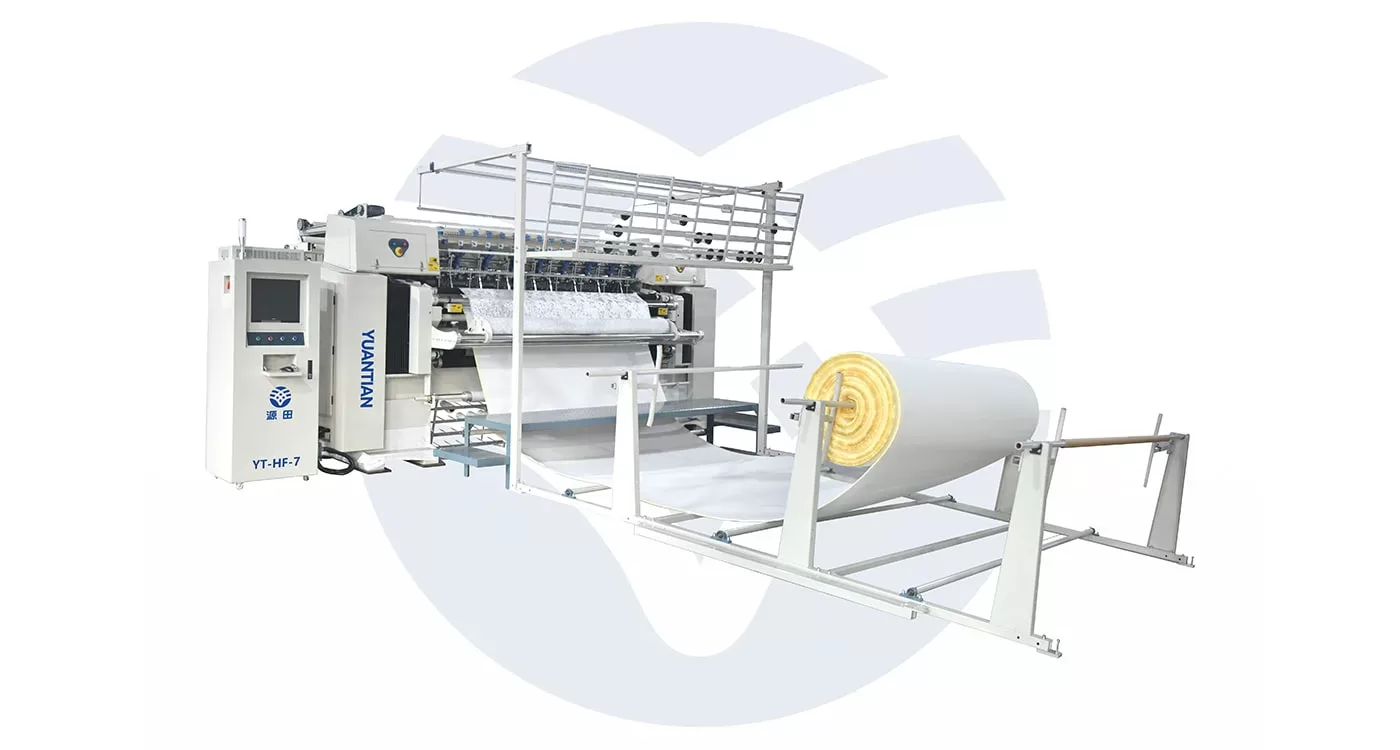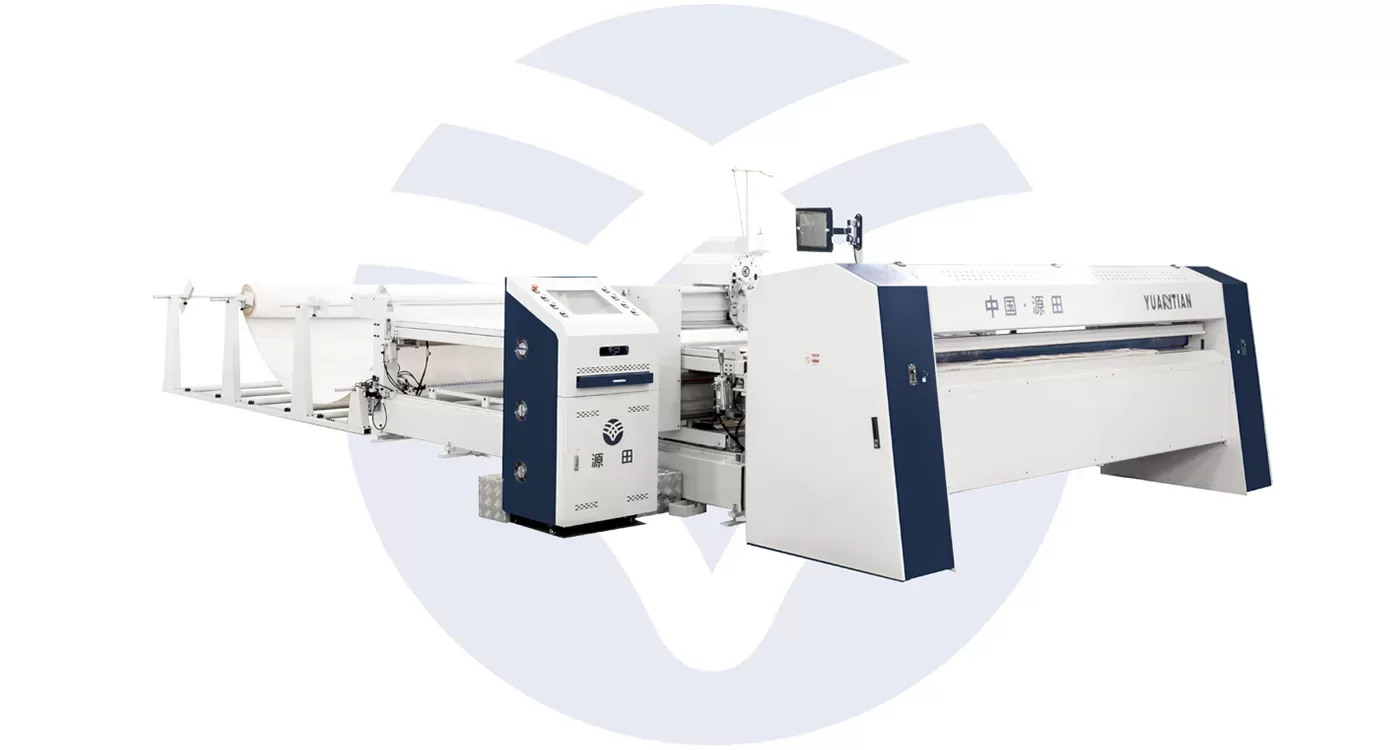- Home » How Mattress Quilting Machines Handle Various Fabric Types
Quilting is an important process in the production of mattresses, touching directly on comfort, aesthetics, and even longevity. Quilting refers to the act of stitching together multiple layers of fabric, foam, and other padding materials to create a soft, cushy mattress surface.
To ensure precision, consistency, and speed, manufacturers rely on specialized mattress quilting machines, which are designed to handle various fabric types, textures, and thicknesses. These machines play a vital role in ensuring that mattresses not only look visually appealing but also provide long-lasting comfort and support.
Overview of Mattress Quilting Machines
What is Mattress Quilting?
Quilting is a method of sewing layers (fabric, foam, and sometimes fibers) together through the top surface of the mattress. Sometimes referred to as the mattress ticking, this layer is what one sees and feels upon first touching a mattress.
For the most part, this type of stitching pattern targets aesthetics in keeping the layers inside the mattress from shifting after some time. Not only are these quilted patterns aesthetically pleasing to look at, but they also help in making the mattress comfortable by equally distributing the sleeper’s pressure.
Types of Mattress Quilting Machines
Numerous types of quilting machines could go into mattress production, each one may handle different types of fabrics and is designed for a different scale of production. Some common examples of such machines include:
Single-Needle Quilting Machines: These machines stitch patterns with one needle in an apt fashion for the smaller lines of production or for those manufacturers who also offer custom quilting designs.
Multi-Needle Quilting Machines: As the name would suggest, multi-needle machines use several needles at one time to perform faster quilting on larger sections of fabric. These machines are ideal for high-volume production in mattress manufacturing.
Computerized Quilting Machines: Higher-end machines are controlled by computer systems, which assist in stitching complex patterns with accuracy. They can also handle a wide range of fabrics and stitching design varieties, thus allowing versatility.

Fabric Types Used in Mattress Quilting
Common Fabrics in Mattress Production
There are numerous types of fabrics used in mattress production, each has different characteristics concerning texture, durability, and breathability. Therefore, the type of fabric used at the time of the quilting can affect how the mattress feels and performs. A few of the common fabrics include:
Knitted Fabrics: These fabrics are soft, elastic, and breathable, all characteristics that people want in a comfortable mattress. Because they are elastic, they easily take the shape of the body and give a plush comfortable feel. More elastic, therefore, they move with the inner layers of the mattress without distortion.
Woven Fabrics: Woven fabrics are tightly interwoven and, therefore, stronger and more resistant than knitted fabrics. These are used extensively in firmer mattresses where the requirement is for strength and durability. Such fabrics are less stretchy but provide a smooth, crisp surface.
Polyester Fabrics: Polyester is a man-made fabric prized for its strength, wrinkle resistance, and comparative economy. It finds wide application in mattress ticking due to the properties of strength and resisting heavy usage. The use of polyester fabrics may either be independently used or blended with other materials to increase the softness quality, like cotton.
Damask Fabrics: Usually, damask has a fabric that is normally used with complicated patterns. It gives the mattress an elegant touch. They are durable, attractive, and hence are in wide application in quality mattresses due to their decorative look and durability.
Organic Fabrics: Due to consumer demand for greener products, some mattresses use organic fabrics for quilting, including cotton, wool, or even bamboo. These fabrics are natural, well-ventilated, hypoallergenic, and will appeal to the health-conscious person and those who are genuinely concerned about the environment.
Handling Different Fabric Types
Mattress quilting machines have a wide range of fabrics they need to process. Everything from nearly weightless, elastic knits to thick, stiff damasks must be accepted by any given quilting machine and processed with no damage or other inconsistencies to the finished product.
How Quilting Machines Adapt to Various Fabric Types
Adjusting for Thickness and Density
The thickness and density of the fabric, added to the layers of foam or padding, make a great difference in how the quilting machine works. Those machines intended for thicker fabrics, such as in the case of woven damask or mattresses with very dense layers of padding, have to use stronger needles and heavier threads so that stitching can get through all layers securely.
The thickness of the fabrics is detected by these machines, which serve to automatically regulate the pressure and tension for even quilting, thereby preventing elongation or distortion of the material during stitching.
For lighter or thinner fabrics like knitted or organic cotton, the machine settings need to be adjusted to avoid overstretching or tearing the material. Quilting machines equipped with computer-controlled systems can automatically calibrate these settings based on the type of fabric being used, ensuring smooth stitching.
Managing Stretch and Flexibility
Stretchy fabrics, such as those made of knits, do need special handling during the quilting process to avoid puckering or distortion. Mattress quilting machines designed for stretch fabrics usually boast advanced tension control systems that see that the fabric is taut but not over-stretched during stitching.
Even the stitch pattern can help with stretch management. For example, wavy or continuous curve patterns are flexible, allowing the stretchy fabrics to move naturally without putting stress on seams.
On the contrary, quilting machines can also push more force on rigid fabrics like woven or damask fabrics for tightly stitched and structured patterns. This is to ensure that the fabric holds onto its shape and keeps the mattress components internally firmly.
Thread and Needle Selection
Different types of fabrics require different types of thread and needles to be used in order to guarantee durability in performance. Thicker threads and larger needles are called for when using heavier fabrics like damask, while finer threads and smaller needles need to be used on lighter fabrics like organic cotton or bamboo so as not to damage them.
Most quilting machines also have interchangeable needle systems, allowing manufacturers to immediately change the size of the needle if a certain different type of fabric requires it. This can be done automatically by the computerized system of the machine, together with the adjustment of tension and needle movement according to the type of material that it will be working on, to create strong, even stitches without fraying or causing tears.

Benefits of Advanced Quilting Machines in Handling Various Fabrics
Versatility in Production
One of the big advantages of higher-end quilting machines is their flexibility. These machines can run many different types of fabrics with minimal, if any, downtime between product runs. This flexibility enables manufacturers to make a wide range of mattress styles, from soft, plush mattresses using stretchy knitted fabrics to firm mattresses using heavy-duty woven fabrics, without having to make extensive manual adjustments.
Enhanced Precision and Consistency
Computerized quilting machines have increased precision and consistency in stitching. With digital controls, the machines can make perfect adjustments to the properties of each fabric type, thus ensuring the quilting patterns will be uniform across all mattresses. This becomes an important feature in high-volume production, where even the slightest inconsistencies can become quality control problems.
Increased Efficiency and Speed
The modern quilting machines are very efficient, given that they automate the process of adjusting the fabric, therefore, enabling productions to be carried out at much higher speeds. Moreover, they save time for the manufacturer, as changing to other types of fabrics does not affect them because one may not need to recalibrate them manually. Therefore, manufacturers can meet the high demand and make different mattress designs in a short period.
Conclusion
Mattress quilting machines have now become a necessity in handling the different types of fabrics used in modern mattress manufacturing. Whether flimsy knitted fabrics, strong woven materials, or sensitive organic fibers, these machines sew each fabric correctly to make a quality, durable, and comfortable mattress.
Advanced quilting machines represent versatility, precision, and efficiency, making them irreplaceable in large-scale production. With further development and perfection of quilting technology, mattress manufacturers will be able to build even more types of mattresses while maintaining top-tier quality across the board.
Связанные с ними товары

















